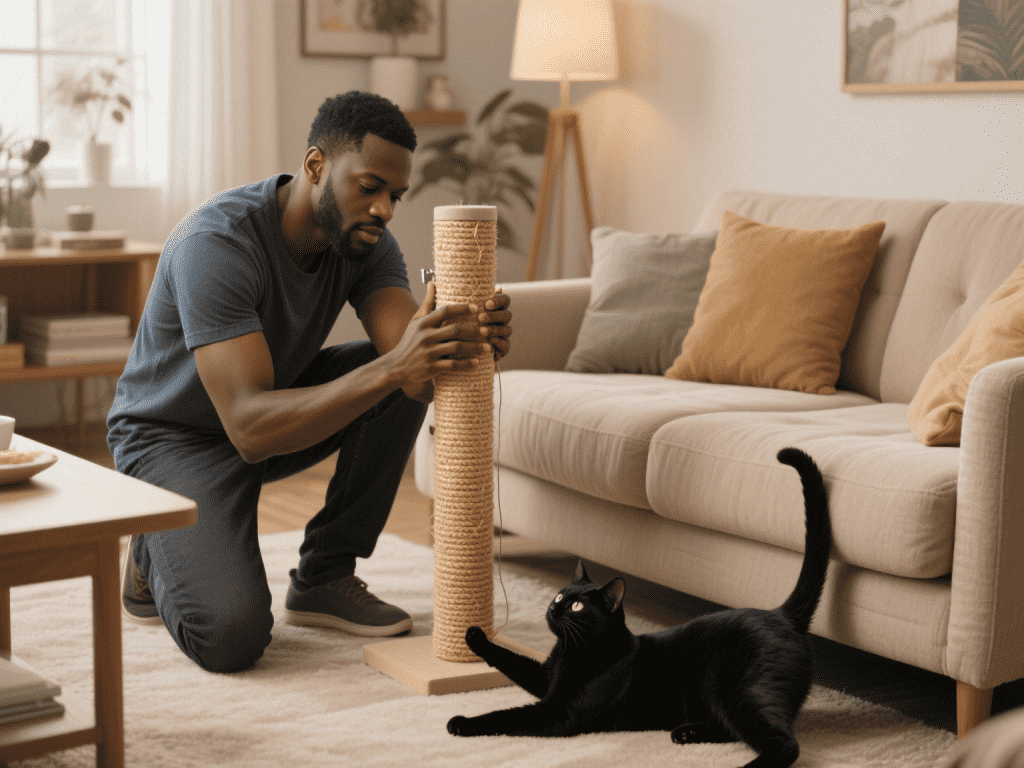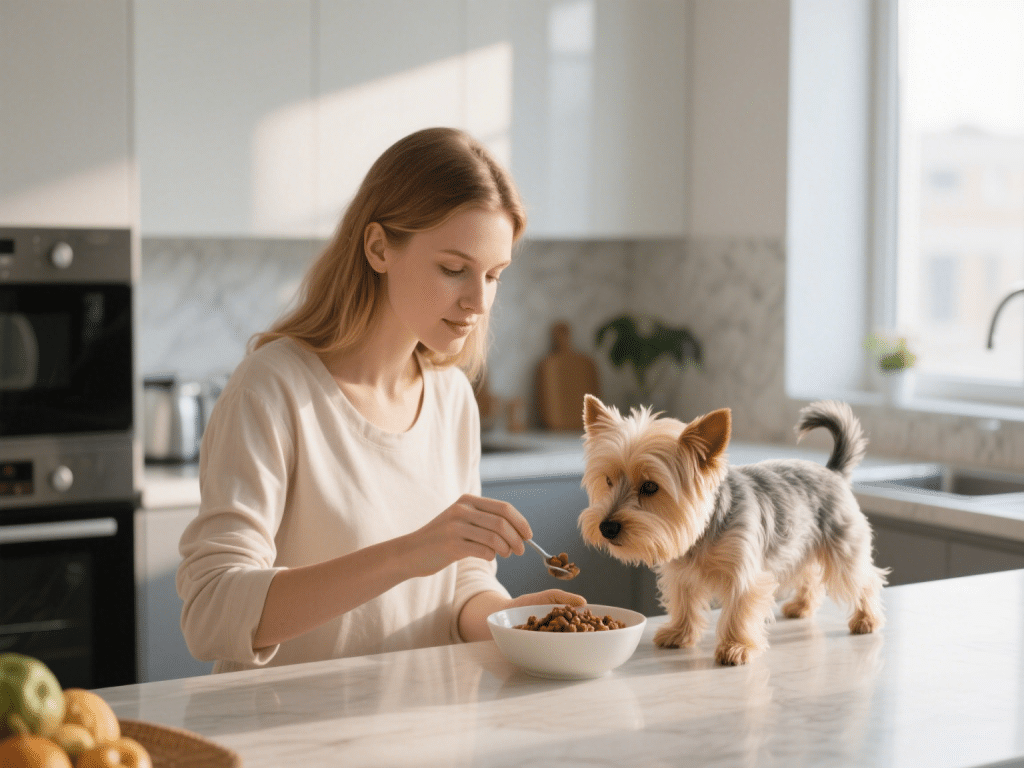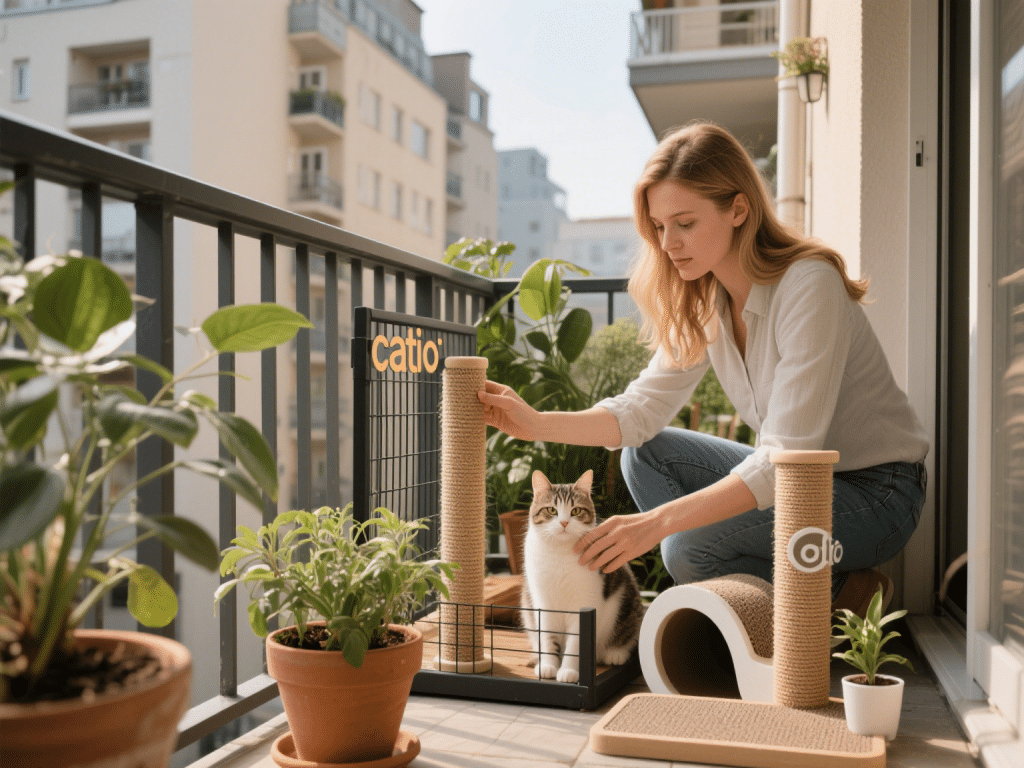
Why Cats Scratch Furniture and How to Redirect the Behavior
Scratched upholstery can frustrate any cat lover—but scratching is an essential feline b...
Cat obesity is a growing concern among pet owners, as excess weight can lead to serious health complications such as diabetes, arthritis, and heart disease. Preventing cat obesity requires a combination of a balanced nutritional plan and regular physical activity. This article offers practical guidance to help you maintain your cat’s healthy weight, improve its overall well-being, and extend its lifespan.
Indoor Lifestyle: Cats living exclusively indoors often lack opportunities for physical activity.
Overfeeding: Free-feeding or offering too many high-calorie treats contributes to weight gain.
Age and Breed: Senior cats and certain breeds (e.g., British Shorthairs, Persians) are prone to slower metabolism.
Underlying Medical Conditions: Hypothyroidism or other endocrine disorders can also play a role in rapid weight gain.
Diabetes Mellitus: Overweight cats have an elevated risk of insulin resistance.
Osteoarthritis: Extra weight places stress on joints, reducing mobility and causing pain.
Hepatic Lipidosis: Sudden weight loss can trigger fatty liver disease, but obesity itself increases the risk of metabolic disturbances.
Cardiovascular Strain: Excess fat deposits can affect cardiac function over time.
High-Quality Protein: Select commercial formulas with at least 30–40% animal-based protein (e.g., chicken, turkey, fish). Lean protein helps preserve muscle mass while promoting satiety.
Controlled Fat Content: Aim for 10–15% fat by weight. Avoid low-cost kibble with excessive fillers like corn or wheat.
Limited Carbohydrates: Cats are obligate carnivores. Overly high carbohydrate levels can promote fat storage and insulin spikes. Opt for formulas with fewer than 10% carbohydrates.
Measured Portions: Use a digital scale or standardized measuring cup. Follow manufacturer’s guidelines based on goal weight, then adjust by 5–10% every two weeks depending on progress.
Scheduled Feeding: Offer two to three measured meals daily instead of free access to food. This routine reduces grazing and helps monitor intake.
Wet vs. Dry Food: Incorporate wet food at least once daily. Higher moisture content supports hydration and can reduce caloric density.
Low-Calorie Options: Replace high-fat commercial treats with freeze-dried chicken pieces, small portions of cooked lean turkey, or catnip toys that dispense kibble.
Limit Treats to ≤5% of Daily Calories: If your cat requires 200 kcal/day, allocate no more than 10 kcal for snacks.
Behavioral Rewards: Use playtime or affection as alternatives to food rewards. This approach strengthens bonding without extra calories.
Puzzle Feeders: Encourage hunting instincts and slow down consumption. Consider treat-dispensing toys that require batting or pawing to release kibble.
Slow-Feed Bowls: Bowls with ridges or mazes force cats to eat more slowly, preventing gulping and reducing vomiting or indigestion.
Maintain a Feeding Journal: Record daily food type, portion size, and any treats. Review entries weekly to identify patterns or overfeeding episodes.
Regular Weigh-Ins: Use a pet scale or home bathroom scale (weigh yourself first, then hold your cat and subtract your weight). Aim for weight checks every two weeks.
Wand Toys and Laser Pointers: Engage your cat in 10–15 minutes of interactive play twice daily. Move toys unpredictably to mimic prey behavior.
Automated Toys: Battery-operated balls, robotic mice, and feather teasers can stimulate independent exercise when you’re not available.
Vertical Spaces: Install cat trees, shelves, or window perches to promote climbing and jumping.
Scratching Posts: Place sturdy scratchers in multiple locations to encourage stretching and activity.
Hiding Spots and Tunnels: Cardboard boxes, paper bags, and collapsible tunnels provide mental stimulation and encourage exploration.
Morning and Evening Peaks: Cats are crepuscular; schedule vigorous play during dawn and dusk to align with natural hunting instincts.
Rotate Toys Weekly: Prevent boredom by introducing new textures and shapes. Even simple paper balls or crumpled aluminum foil can spark interest.
Visual and Palpation Checks: Every month, evaluate your cat’s BCS on a 1–9 scale. A healthy cat typically falls between BCS 4–5. You should easily feel its ribs without excess fat.
Photographic Records: Take side and top-down photos monthly to visually document physical changes.
Calculate Resting Energy Requirement (RER):
RER(kcal/day)=70×(idealbodyweightinkg)0.75RER (kcal/day) = 70 × (ideal body weight in kg) ^ 0.75RER(kcal/day)=70×(idealbodyweightinkg)0.75
Set Weight Loss Goal: Aim for 1–2% body weight loss per week. For a 5 kg cat, that equates to 50–100 grams of weight loss weekly.
Modify Portions Gradually: If weight loss stalls for two consecutive weeks, reduce daily calories by an additional 5–10%.
Quarterly Checkups: Schedule veterinary visits every three months to evaluate metabolic health, adjust diet formulations, and screen for underlying conditions (e.g., thyroid dysfunction).
Bloodwork and Urinalysis: Ensure no hidden illnesses are contributing to weight fluctuations or appetite changes.
Lower Activity Level: Adjust calorie intake further, as older cats burn fewer calories at rest.
Joint Supplements: Consider adding omega-3 fatty acids or glucosamine to support joint health during exercise.
Cautious Caloric Restriction: Avoid overly rapid weight loss in kittens; aim for maintenance until they reach full growth around 10–12 months.
Increased Play Frequency: More frequent short play sessions prevent excessive fat accumulation while supporting healthy development.
Separate Feeding Areas: Use microchip-activated feeders or place food bowls in different rooms to prevent food stealing or resource guarding.
Monitor Each Cat Individually: Keep distinct feeding journals and weight logs per cat.
Preventing cat obesity is a multi-faceted process involving carefully balanced nutrition, consistent portion control, and stimulating exercise. By selecting high-protein, low-carbohydrate foods, managing treats, and creating an enriched environment with daily play, owners can maintain their cats’ optimal body condition. Regular monitoring—both at home and with veterinary guidance—ensures timely adjustments to the weight management plan. Prioritizing your cat’s physical health and mental well-being not only reduces the risk of chronic diseases but also fosters a happier, more active companion.
By implementing these strategies, you’ll support a lifetime of health for your feline friend. Stay attentive to changes, celebrate small milestones, and remember that patience and consistency are key to successful, sustainable weight management.

Scratched upholstery can frustrate any cat lover—but scratching is an essential feline b...

It seems innocuous: your dog eyes the cat’s bowl and you wonder, “What harm could cat ...

I’m a lifelong eco-enthusiast and certified pet behavior consultant. Making your own pet...

If your dog often experiences bloating, gas, diarrhea, or vomiting after meals, chances ar...

IntroductionBalconies offer fresh air and stimulation for indoor cats but also pose safety...

IntroductionIntroducing a new puppy to a senior dog requires careful planning. Senior dogs...
Comments on "Preventing Cat Obesity: Healthy Diet and Exercise Tips" :